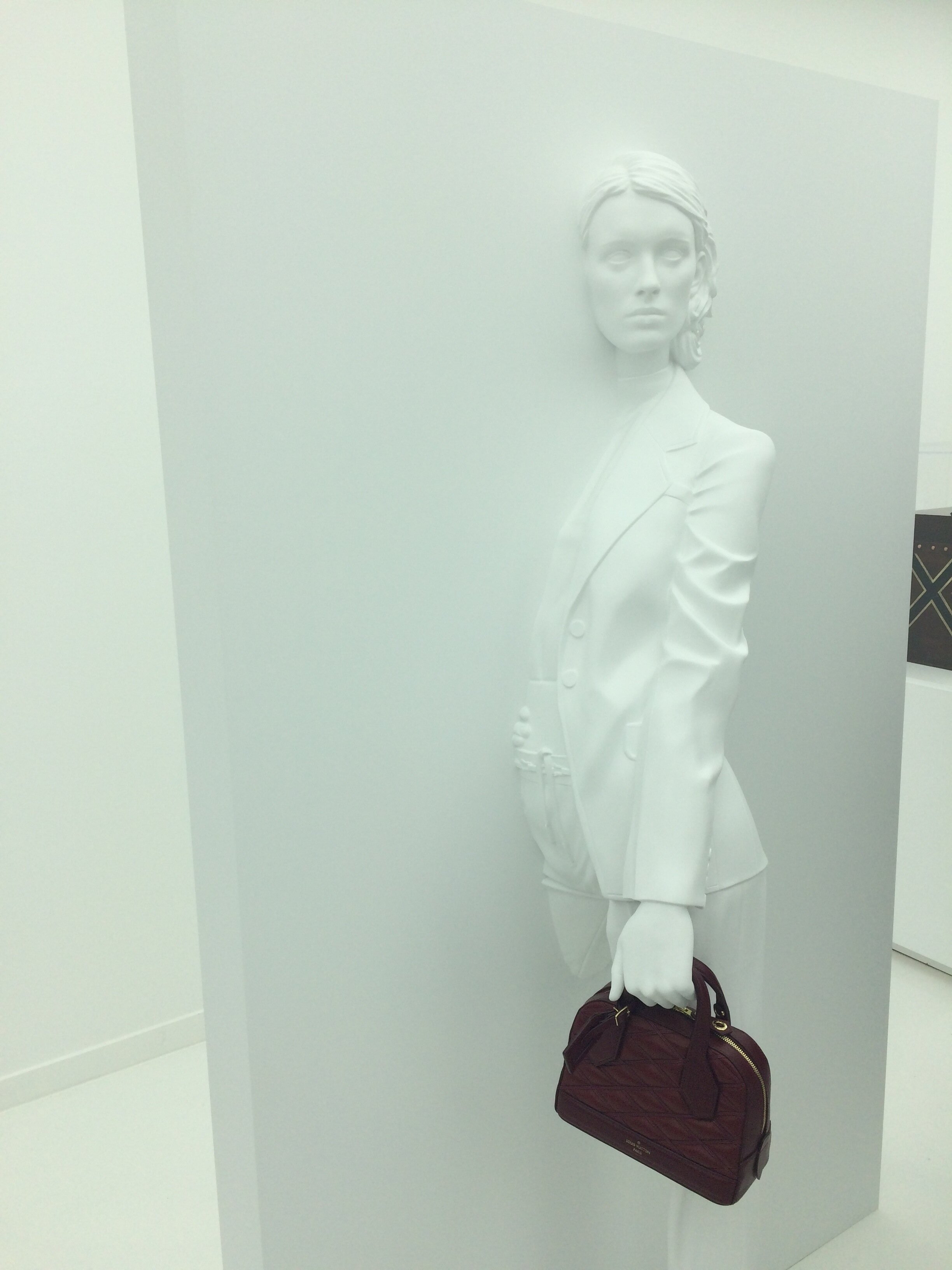EXHIBITION REVIEW – Louis Vuitton Series 3, 21st-September-18th October 2015, London, Uk
REVIEWED BY SANDRA DUBOIS AND HELEN SPENCER, WRITTEN BY HELEN SPENCER
Fashion exhibitions have become increasingly fashionable within mainstream popular culture as a site for entertainment and storytelling. On the one hand, this has served to diversify and broaden fashion curation, beyond the confines of the museum, attracting a broader demographic of non-traditional museum-goers. However, this democratisation has also created tension between museological fashion curation and other practitioners and brands creating ‘curated’ experiences.
Brands such as Louis Vuitton have recognised the opportunity to appeal to brand adopters and enthusiasts, who are also museum-goers. This provides the opportunity for creating an experience, which sits at the intersection of an extended retail experience, and cultural entertainment. This approach allows the brand to explore their unique savoir faire in a contemporary way.
Although the ‘Series 3’ exhibition took inspiration from the format of a museum presentation style, it is important to note that it was produced without a fashion curatorial team. Instead, the conception and organisation of the ‘unconventional’ exhibition followed the artistic direction of Nicolas Ghesquière and was realised by his ‘in-house’ team.
In contrast to a museological fashion exhibition, less emphasis was placed upon the contextualisation of the brand, and more on its currency. In the world of fast fashion, brands such as Louis Vuitton have the added value of their heritage and artisanal nature. They produce quality-made products, which have longevity and the ability to transcend seasons. Thus, it is no coincidence that the timing of ‘Series 3’ coincided with London Fashion Week, which showcased the next season’s fashions.
‘Series 3’ re-interpreted the Autumn/Winter 2015/2016 fashion show, held earlier in the year and was made accessible to a wider audience free of charge. The exhibition invited “visitors to discover Nicolas Ghesquière’s inspirations” for the collection (Louis Vuitton website, 2015). Through the application of innovative props and high quality display methods, it enabled the visitor to have an interactive and sensorially engaging experience. It therefore challenged traditional curatorial exhibition techniques in its management of curatorial narrative, exhibition design and the display of objects.
Although there were short text panels upon entry into the different sections, there were no text captions. In their place, the visitor was guided by a more emotive, sensorial experience that left much to their personal interpretation. However, without a guided tour, the average visitor would struggle to gain access to the intention of the display, thus affecting their interpretation and understanding. To this effect, more contextualisation and guiding of the visitor experience within the display could have added much-needed depth.
The exhibition also challenged other traditional curatorial display methods, such as the hierarchy placed on garments over accessories. In one room, this tendency was subverted by showcasing accessories alone on retail-style, posed mannequins. However, with no informational accompanying text, the pieces could only be appreciated in a similar way to that of a retail experience within a department store.
Image 1: Retail –style, posed mannequin display
The exhibition seemed to promise a holistic look at the creative development of the collection; whereas in reality, the emphasis was placed upon the exploration of the accessories. The clothing from the Autumn Winter 2-15/2016 collection was showcased in the final room, however, in a similar display style to that of a department store.
Image 2: Display showcasing the Autumn/Winter 2015-2016 collection
Throughout the exhibition, it felt the development process of clothing production was lacking: from design inspiration; to textile sampling; to toiling the silhouettes in 3-D form. The exhibition marketing promised insight into this aspect of creative production; however in reality, the exhibition itself merely displayed the final outcome in form of the garments and digital plinths displayed like a catwalk show.
Image 3: Digital plinths showing the looks from the catwalk show
Despite lacking in depth at times or academic rigour, the exhibition offered visitors an entertaining experience that would hopefully last longer than a fashion season. Equally, it perhaps served to engage with their younger audience of adopters and enthusiasts who are digitally and technology aware. Ultimately, though, it showed the continued currency of the brand and its relevance within fashions past, present and future.
Acknowledgements:
The authors wish to thank Jenna-Rossi Camus and The Louis Vuitton ‘Series 3′ team for their help in preparing this article.
Contributors:
Dubois and Spencer is a collaborative partnership between Sandra Dubois and Helen Spencer, LCF MA alumni from Fashion Curation and History and Culture of Fashion, respectively. Both are early career practitioners and researchers developing a variety of projects within the field of fashion curation including exhibition design, research consultancy and creative direction.
After studies of the practice and history of fashion curation, Sandra Dubois is developing a distinctive voice to interpret and display and objects across time and space. Whereas Helen Spencer investigates the theoretical underpinnings of fashion and its history, grounded within a material culture and object-based approach. Taken together, these perspectives allow for an in-depth analysis of dress in the context of fashion curation.



